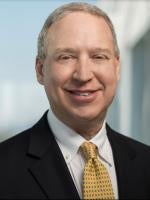Although the SECURE 2.0 Act of 2022 (SECURE 2.0) was enacted nearly two years ago, and many of its changes have already been implemented, some SECURE 2.0 provisions have yet to take effect. This article provides an overview of three significant SECURE 2.0 changes taking effect in 2025: higher catch-up limits for employees who reach ages 60 to 63, a one-year reduction in the service requirement for long-term, part-time employees, and required automatic enrollment for newly established 401(k) and 403(b) plans.
Higher Catch-Up Limits
Currently, participants in 401(k) and 403(b) plans who reach age 50 by the end of a calendar year may make “catch-up” contributions, which are salary deferrals over the annual deferral limit, provided the plan permits such contributions. For example, in 2025, a participant who is age 50 or older will be able to make a catch-up contribution of up to $7,500, in addition to the 2025 annual deferral limit of $23,500, for a total contribution of $31,000. Furthermore, under SECURE 2.0, plan participants who reach age 60, 61, 62, or 63 by the end of a year will be able to make even higher catch-up contributions for that year of up to the greater of $10,000 or 150% of the standard catch-up contribution. Therefore, for 2025, the higher catch-up contribution limit is $11,250.
These catch-up contributions may be made on a pretax or, if permitted by the plan, Roth basis. Also, going forward, the catch-up contribution amounts will be indexed for inflation. Plans are not required to offer either the standard catch-up contributions for participants who are age 50 and older or the new higher catch-up contributions for participants who reach age 60, 61, 62, or 63 by the end of a year; however, there is little reason for plans not to allow the contributions. This provision becomes effective for taxable years beginning after December 31, 2024.
One-Year Reduction in Service Requirement for Long-Term, Part-Time Employees
Historically, employers were able to exclude employees who worked less than 1,000 hours during the plan year from being eligible to participate in their 401(k) plan. However, under current law, as amended by the SECURE Act of 2019, 401(k) plans generally must allow an employee who has reached at least age 21 to contribute to the plan if the employee worked at least 500 hours per year with the employer for at least three consecutive years. Under SECURE 2.0, the three-year service requirement will be reduced to two years. This change is effective for plan years beginning after December 31, 2024.
Required Automatic Enrollment for New Plans
Another significant SECURE 2.0 change effective next year is required automatic enrollment for newly established 401(k) and 403(b) plans. Plans established after December 29, 2022, will be required to automatically enroll eligible employees in the plan through an eligible automatic contribution arrangement. These provisions will require employers to enroll eligible employees at a default contribution rate between 3% and 10% of their compensation, with annual escalations of 1% until the contribution reaches at least 10% (but not more than 15%). Employees will retain the ability to opt out or adjust their contribution levels. Employers with fewer than 10 employees and businesses that have been operating for less than three years are exempt from this provision. Governmental plans and church plans are also exempt from this requirement. This provision applies for plan years beginning after December 31, 2024.
Deadline for SECURE 2.0 Amendments
The deadline for amending retirement plans to comply with SECURE 2.0 changes was extended late last year. Most retirement plans now have until December 31, 2026, to incorporate SECURE 2.0-related changes. Collectively bargained plans have until December 31, 2028, and governmental plans have until December 31, 2029. The SECURE 2.0 changes can be implemented administratively now even though an amendment is not yet required.




 />i
/>i
